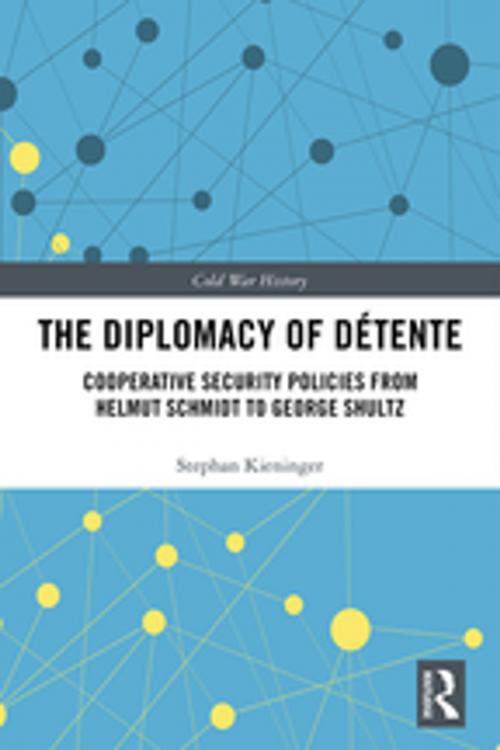The Diplomacy of Détente
Cooperative Security Policies from Helmut Schmidt to George Shultz
Nonfiction, History, Western Europe, Germany, Social & Cultural Studies, Political Science, International, International Relations| Author: | Stephan Kieninger | ISBN: | 9781351013291 |
| Publisher: | Taylor and Francis | Publication: | May 20, 2018 |
| Imprint: | Routledge | Language: | English |
| Author: | Stephan Kieninger |
| ISBN: | 9781351013291 |
| Publisher: | Taylor and Francis |
| Publication: | May 20, 2018 |
| Imprint: | Routledge |
| Language: | English |
This book investigates the underlying reasons for the longevity of détente and its impact on East–West relations.
The volume examines the relevance of trade across the Iron Curtain as a means to facilitate mutual trust, as well as the emergence of new habits of transparency regardless of recurring military crises. A major theme of the book concerns Helmut Schmidt’s foreign policy and his contribution to the resilience of cooperative security policies in East–West relations. It examines Schmidt’s crucial role in the Euromissile crisis, his Ostpolitik diplomacy and his pan-European trade initiatives to engage the Soviet Union in a joint perspective of trade, industry and technology. Another key theme concerns the crisis in US–Soviet relations and the challenges of meaningful leadership communication between Washington and Moscow in the absence of backchannel diplomacy during the Carter years. The book depicts the freeze in US–Soviet relations after the Soviet invasion in Afghanistan, the declaration of martial law in Poland, and Helmut Schmidt’s efforts to serve as a mediator and interpreter working for a relaunch of US–Soviet dialogue. Eventually, the book highlights George Shultz’s pivotal role in the Reagan Administration’s efforts to improve US-Soviet relations, well before Mikhail Gorbachev’s arrival.
This book will be of interest to students of Cold War studies, diplomatic history, foreign policy and international relations.
This book investigates the underlying reasons for the longevity of détente and its impact on East–West relations.
The volume examines the relevance of trade across the Iron Curtain as a means to facilitate mutual trust, as well as the emergence of new habits of transparency regardless of recurring military crises. A major theme of the book concerns Helmut Schmidt’s foreign policy and his contribution to the resilience of cooperative security policies in East–West relations. It examines Schmidt’s crucial role in the Euromissile crisis, his Ostpolitik diplomacy and his pan-European trade initiatives to engage the Soviet Union in a joint perspective of trade, industry and technology. Another key theme concerns the crisis in US–Soviet relations and the challenges of meaningful leadership communication between Washington and Moscow in the absence of backchannel diplomacy during the Carter years. The book depicts the freeze in US–Soviet relations after the Soviet invasion in Afghanistan, the declaration of martial law in Poland, and Helmut Schmidt’s efforts to serve as a mediator and interpreter working for a relaunch of US–Soviet dialogue. Eventually, the book highlights George Shultz’s pivotal role in the Reagan Administration’s efforts to improve US-Soviet relations, well before Mikhail Gorbachev’s arrival.
This book will be of interest to students of Cold War studies, diplomatic history, foreign policy and international relations.















